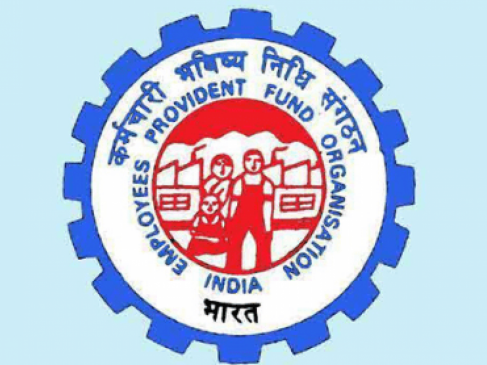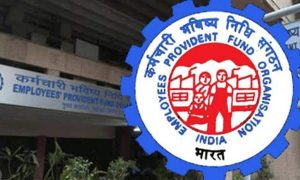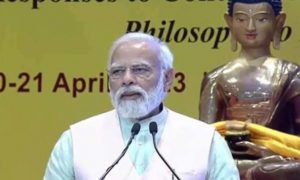The retirement fund body is yet to start the process to determine the return on EPF savings for 2022-23.
Amid a clutch of developments that have a bearing on the large corpus it manages, the Employees’ Provident Fund Organisation (EPFO) is keeping its nearly 70 million subscribers on tenterhooks with its slow-moving approach.
Also Read- Govt May Fix PF Deposit Interest Rate at 8% For 2022-23; CBT Likely To Meet Within A Month
The retirement fund body is yet to start the process to determine the return on EPF savings for 2022-23. While no date is set yet for the EPFO’s Central Board of Trustees (CBT) to meet, a vital investment oversight panel of the board is in suspended animation.
Several trustees of the CBT have expressed unhappiness over the situation and said they do not know the status on various developments at the EPFO, including the interest rate for 2022-23, the pending interest credits for 2021-22 and the action being taken on the recent Supreme Court ruling on higher pension for EPF members.
The EPFO, the country’s second-largest fund manager, had total investments of over Rs 11 trillion as on March 31, 2022.
The suspense on this year’s EPF rate is even as two-thirds of the subscribers are still to get the 8.1% interest credit for 2021-22.
Read More: Just Changed Job? Know These Steps To Transfer EPF Account From Old To The New Employer
More importantly, the board’s Finance Investment and Audit Committee (FIAC), which is responsible for monitoring the EPFO’s investments and recommending the EPF rate each year based on the earnings on its massive portfolio, is yet to be reconstituted after it was disbanded late last year.
“For over three-and-a-half months, there has been no FIAC and everyone is waiting to know when it will be formed. Typically, the FIAC is reconstituted before the previous one is dissolved,” said a source, adding that there is no clarity on the income of the EPFO for this year.
“Nobody knows how the fund is performing or the details of investments made in the last six months. How will the interest rate be fixed when the FIAC and trustees do not know what is happening?” the source questioned.
Conventionally, the FIAC meets to review the earnings and investments of the fund as well as the proposed rate of interest, which is then taken up to the CBT, chaired by the Union labour and employment minister.
The last meeting of the CBT was held on October 31. A proposed subsequent meeting was called off and no fresh date has been conveyed since then.
A detailed questionnaire on these issues from FE to the Central Provident Fund Commissioner, who heads the EPFO, did not elicit a response till the time of going to press.
The EPFO has said that the work to credit interest for 2021-22 into each member’s account is in progress, but employees who are part of the scheme remain anxious. The delay was initially attributed to a software glitch as the passbooks of members had to be split into taxable and non-taxable contributions so that a tax on EPF savings’ income, introduced in 2021-22, can be deducted on contributions above Rs 2.5 lakh.
The Central Board of Direct Taxes, on its part, has said that any work on their side for implementing the tax, has been completed and it is up to the EPFO to credit the interest into members’ accounts.
Read More: Here’s How To Avoid Rejection Of EPF Withdrawal Claims
The meeting of the CBT for fixing the interest rate for 2021-22 had also been delayed and it had met in March 2022, and had declared an interest rate of 8.1% of the fiscal. Once approved by the CBT, the rate of interest then has to be ratified by the ministry of finance, which it did in June 2022.
Chaired by the Union labour and employment minister, the CBT consists of officials of the Union labour ministry and state labour departments as well as representatives of employers and employees.
Of the EPFO corpus, 18% was invested in central government securities as at the end of last financial year and 42.7% was invested in state development loans. The retirement fund manager had also invested 5.1% of its investible corpus in bonds of private sector companies while 9.24% was invested in exchange-traded funds.
Also Read– How to update photo in Aadhaar card? Follow these steps
On November 4, the SC had upheld the Employees’ Pension (Amendment) Scheme, 2014, giving another opportunity to members who have availed of the employees pension scheme, to opt for higher annuity over the subsequent four months. Employees who were existing EPS members as on September 1, 2014, have got the chance to contribute up to 8.33% of their ‘actual’ salaries — against 8.33% of the pensionable salary capped at Rs 15,000 every month — towards pension. The court had said a beneficial scheme can’t be defeated by reference to a cut-off date where the employer was not following the ceiling limit of Rs 5,000 or Rs 6,500, and had deposited 12% of the actual salary. The EPFO subsequently issued a circular asking field officers to implement the SC decision, but there is no clarity on the financial cost of the move.





































